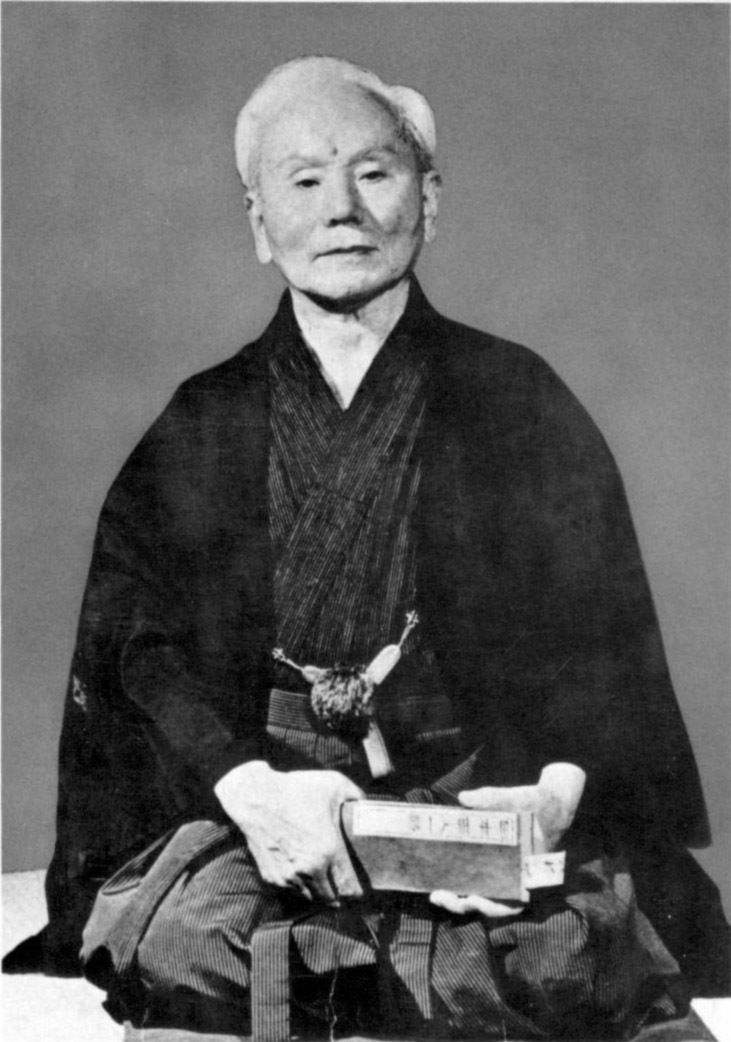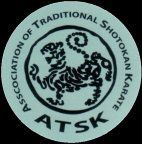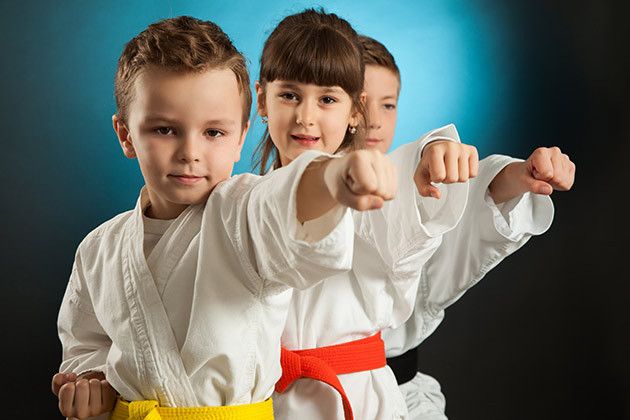Karate History
A Brief History
It is believed by most historians that in the sixth century Boddhidarma (called Daruma Tashi by the Japanese and Tamo by the Chinese), an Indian monk and first patriarch of Zen Buddhism, from Kamchipuram near Madras, travelled across the Himalayas on foot into China’s northern province of Hunanl
He settled at the Shorin Ji (Shaolin Temple) in the Songshan mountains and introduced eighteen exercises, which represented animals both mythical and real, developed into Shorin-ji Kempo (Shaolin Temple Fist).
Shorin-ji Kempo, also known as Ch’uan Fa (Kempo means “law” or “way of the fist” and is read “Ch’uan fa” in Mandarin), was then introduced into Okinawa through shipwrecked sailors, trading envoys, and cultural exchange between Okinawa and China. These influences became Okinawa-te (“te” meaning “hand”). The three main schools of Okinawa-te were located in Tomari, Naha and Shuri.
In 1875, Okinawa officially became part of Japan, but it wasn’t until 1903 that the first public karate demonstration took place. It was also around this period that the term Karate was first used, meaning “empty fist” or “empty hand”. Karate instructors started to teach in Japan in 1904, although karate officially entered Japan in 1915 with Gichin Funakoshi.
Master Funakoshi
Gichin Funakoshi was born in 1868 in Shuri, Okinawa Prefecture. He studied Karate-do from childhood under Masters Azato and Itosu.
He founded the Shotokan association for the Spirit of Martial Arts. The word Shotokan is derived from "Shoto", which was Master Funakoshi's pen name, and means "Waving Pines", and "Kan", meaning "Hall".
His influence on Karate was so great that he is credited with changing the meaning of the Chinese characters for "Kara-te" from Chinese Hand to Empty Hand.
The Master died April 26th 1957 in Tokyo, but his karate has gone from strength to strength and is now practiced all over the world.
There has been a wealth of material written about Master Funakoshi, and this website does not attempt to plagiarise the hard work of others. We recommend you read "Karate-Do - My Way of Life", which is the Master's story in his own words.

Dojo Kun
Hitotsu! Jinkaku Kansei Ni Tsutomuru Koto!
(One! To Strive For The Perfection Of Character!)
Hitotsu! Makoto No Michi O Mamoru Koto!
(One! To Defend The Paths Of Truth!)
Hitotsu! Doryoku No Seishin O Yashinau Koto!
(One! To Foster The Spirit Of Effort!)
Hitotsu! Reigi O Omonzuru Koto!
(One! To Honour The Principles Of Etiquette!)
Hitotsu! Kekki No Yu O Imashimuru Koto!
(One! To Guard Against Impetuous Courage!)
Further Reading
Here is a list of excellent reference material, to do with Karate and the Martial Arts. Many of these books and videos were used in the construction of this Website.
'Karate-Do - My Way of Life'
Gichin Funakoshi
'Karate-Do Kyohan (The Master Text)'
Gichin Funakoshi
'Karate-do Nyumon (The Master Introductory Text)'
Gichin Funakoshi
'A Shotokan Karate Book of Facts Vol. I'
Clive Leyton, Michael Randall, Michael Nursey
'A Shotokan Karate Book of Facts Vol. II'
Clive Leyton, Michael Randall, Michael Nursey
'A Shotokan Karate Book of Facts Vol. III'
Clive Leyton, Michael Randall, Michael Nursey
'The Kanazawa Years'
Dr. Clive Leyton
'The Beginners Guide To Shotokan Karate'
John Van Weenen
'Dynamic Power of Karate'
Hirokasu Kanazawa
'Dynamic Karate'
Masatoshi Nakayama
'Moving Zen'
C. W. Nicol
'Karate - The art of Empty Hand Fighting'
Hidetaka Nishiyama & Richard C Brown
'Karate's History and Traditions'
Bruce A. Haines
Japanese Karate Terms
Here is a list of phrases, common and uncommon, and their meanings. Some of the phrase translations may not be strictly accurate, word for word - but they do reflect the normal usage (Gedan, and Gedan Barai, for example).
A
B
C
D
E
F
G
H
I
J
K
M
N
O
R
S
T
U
W
Y
Z
Numbers
A
| Japanese | English |
| Age Uke | Upper Rising Block |
| Age Zuki | Upper Rising Punch |
| Aka | Red |
| Ashi Barai | Leg Sweep |
| Ashikubi | Ankle |
| Ate | Strike |
| Awase | Combined |
| Azato (1827/8 - 1906) | Master Yasutsune Azato was one the two most important teachers of Master Funakoshi. Note Master Azato shares his forename with Master Itosu. |
B
| Japanese | English |
| Bassai-dai (Kata) | To Storm a Fortress |
| Bo | Staff |
| Budo | Martial Way |
| Bunkai | Application |
C
| Japanese | English |
| Chinte (Kata) | Chinese Hands |
| Choku Zuki | Straight Punch |
| Chudan | Chudan |
D
| Japanese | English |
| Dachi | Stance |
| Dai (as in Bassai-dai) | Major |
| Dan | Level (or Man) |
| Do | Way |
| Doji | Simultaneous |
| Dojo | Place of the Way; Training Place |
E
| Japanese | English |
| Embusen | Line(s) of movement (in Kata) |
| Empi | Elbow |
| Empi Uchi/Uke | Elbow Strike/Block |
| Engetsu Uke | Circle Foot Block |
| Enoy | Spirit of getting ready |
| Enpi (Kata) | Flying Swallow |
F
| Japanese | English |
| Fudo Dachi | Rooted Stance |
| Fumikomi | Stamping Kick |
| Funakoshi ((November?) 1868 - April 26th, 1957) | Gichin Funakoshi - the master, and founder of modern Karate-do |
G
| Japanese | English |
| Gamae | Withdrawing |
| Gankaku (Kata) | Crane on a Rock |
| Gedan | Lower Level |
| Gedan Barai | Downward Block |
| Gedan Zuki | Lower Level Punch |
| Geri | Kick |
| Gi | Training Clothes |
| Gojushiho (-sho, -dai) (Kata) | Fifty-four Steps |
| Gohon Kumite | Five Attack Sparring |
| Gyaku | Reverse |
| Gyaku Zuki | Reverse Punch |
H
| Japanese | English |
| Hachiji Dachi | Naural Stance |
| Hai | Yes |
| Haishu | Back-hand |
| Haishu Uke | Back-hand Block |
| Hajime | Begin |
| Haisoku | Instep of Foot |
| Haito | Ridge Hand |
| Haito Uchi | Ridge Hand Strike |
| Haiwan | Back-arm |
| Hangetsu (Kata) | Half Moon |
| Hangetsu Dachi | Half Moon (or Wide Hour Glass) Stance |
| Hanmi | Half Front (45 degrees, facing opponent) |
| Hara | Belly |
| Heian | Peaceful |
| Heian Kata's (Shodan, Nidan, Sandan, Yondan, Godan) | The Five Heian Kata's, derived from Kanku-dai |
| Heisoku Dachi | Informal Attention Stance |
| Hidari | Left |
| Hikite | Both Hands Retracting |
| Hiraken | Fore-knuckle fist (striking with second joint of fingers) |
| Hiza | Knee |
| Hiza Geri | Knee Kick |
| Hombu | Main Dojo |
| Hyosh | Timing |
I
| Japanese | English |
| Iee Iie | No |
| Ippon | One |
| Ippon Ken | One-knuckle Fist |
| Ippon Nukite | One Finger Spear Hand |
| Itosu (1830/32 - 1916) | Master Yasutsune Itosu was one the two most important teachers of Master Funakoshi. Note Master Itosu shares his forename with Master Azato. |
J
| Japanese | English |
| Ji'in (Kata) | Temple Grounds, or Gardens |
| Jion (Kata) | From the Temple of Jion |
| Jitte (Kata) | Ten Hands |
| Jiyu Dachi | Free Stance |
| Jiyu Ippon Kumite | Semi-free One-attack Sparring |
| Jiyu Kumite | Free Sparring |
| Jodan | Upper Level |
| Juji Uki | Juji Uki |
K
| Japanese | English |
| Ka | Student |
| Kage Uki | Hook Block |
| Kage Zuki | Hook Punch |
| Kaisho | Open Hand (palm) |
| Kaiten | Rotating |
| Kakato | Heel |
| Kakiwake Uke | Wedge Block |
| Kamaete | Get Ready |
| Kan | Hall |
| Kanazawa (1931 - ) | Hirokazu Kanazawa, successor to Master Funakoshi |
| Kanku (-sho, -dai) (Kata) | Look to the Sky |
| Kara | Empty |
| Karate | Empty Hand |
| Kata | Form, or Formal Exercise |
| Keagi | Snap |
| Keito Uke | Chicken-head Wrist-block |
| Kekomi | Thrust |
| Ken | Fist |
| Kensei | Technique carried out with silent Kiai |
| Kesa Geri | Diagonal Kick |
| Ki | Inner Strength |
| Kiai | Shout |
| Kiba Dachi | Horse riding Stance |
| Kihon | Basics |
| Kihon Ippon Kumite | Basic One Attack Sparring |
| Kime | Focus (Tension and Relaxation) |
| Kin Geri | Groin Kick |
| Kizami Zuki | Jabbing Punch |
| Kohai | Junior (to oneself) |
| Kokutsu Dachi | Back Stance |
| Kosa | Crossing |
| Kosa Uke | Crossing Block |
| Koshi | Ball of the Foot |
| Kumade | Bear Hand |
| Kumite | Sparring |
| Kun | Oath |
| Kyu | Grade (or Boy) |
M
| Japanese | English |
| Ma-ai | Distance |
| Mae | Front |
| Mae Geri | Front Kick |
| Makiwara | Striking Post |
| Mawashi Geri | Roundhouse Kick |
| Mawate | Turn |
| Meikyo (Kata) | Bright Mirror |
| Migi | Right (opposite to Left) |
| Mika Zuki Geri | Crescent Kick |
| Mokuso | Meditation |
| Morote | Augmented |
| Morote Uke | Augmented Block |
| Morote Zuki | Augmented Punch |
| Moto Dachi | Original Stance |
N
| Japanese | English |
| Nagashi Uke | Sweeping Block |
| Nakadaka Ippon Ken | Middle Finger One Knuckle Fist |
| Nami Ashi | Inside Leg Block |
| Neko Ashi Dachi | Cat Stance |
| Nidan Geri | Double Kick |
| Nihon Nukite | Two-finger Spear Hand |
| Nijushiho (Kata) | Twenty-four Steps |
| Nukite | Spear Hand |
O
| Japanese | English |
| Obi | Sash, or Belt |
| Oi Zuki | Stepping Punch |
| Okinawa | Influential home of Japanese Karate |
| Osae | Pressing |
| Osae Uke | Pressing Block |
| Oss | General term, predominately meaning "Yes, I understand", but is also used for "Thank-you", or "Hello" |
R
| Japanese | English |
| Rei | Bow |
| Ren Zuki | Combination Punching |
| Ryo | Both |
| Ryoken | Both Fists |
| Ryowan | Both Arms |
| Ryu | School |
S
| Japanese | English |
| Sanbon Kumite | Three Attack Sparring |
| Sanchin Datchi | (Narrow) Hour Glass Stance |
| Sashi Ashi | Stepping Over |
| Seiken | Fore Fist |
| Seiryuto Uke | Ox-jaw Block |
| Seiza | Kneeling Position |
| Sempai | Senior |
| Sensei | Teacher (One who has gone before) |
| Shihan | Master |
| Shiro | White |
| Sho (as in Bassai-sho) | Minor |
| Shoto | Pine Waves (Master Funakoshi's pen-name) |
| Shotokan | Hall of Shoto |
| Shushin | Referee |
| Shizentai | Natural, Relaxed Stance |
| Shobu | Competition |
| Shuto | Knife Hand |
| Shuto Uchi | Knife Hand Strike |
| Shobu | Competition |
| Sochin (kata) | Immovable Stance |
| Sochin Dachi | Immovable, Straddle-leg Stance (from Sochin Kata) |
| Soete | Open Hand |
| Sokumen | Side |
| Sokuto | Side of Foot |
| Soto Ude Uke | Outside Forearm Block |
| Sukui | Scooping |
T
| Japanese | English |
| Taikyoku Shodan (Kata) | First Cause |
| Tai Sabiki | Test by Breaking |
| Tameshiwara | Stepping Over |
| Tate Shuto | Vertical Knife Hand |
| Te | Hand |
| Teiji Dachi | T-Stance |
| Teisho | Palm Heel |
| Tekki | Iron Horse, or Iron Knight |
| Tekki Shodan, Nidan, Sandan (Katas) | Tekki Katas of 1st, 2nd, and 3rd levels |
| Tekubi | Wrist |
| Tettsui | Bottom Fist |
| Tettsui Uchi | Bottom Fist Strike |
| Te Wazza | Hand Techniques |
| Tobi | Jumping |
| Tokui | Favourite |
| Tora | Tiger |
| Tsukami | Grasping |
| Tsumasaki | Tips (of Fingers or Toes) |
| Tsuru Ashi Dachi | Crane Leg Stance |
U
| Japanese | English |
| Uchi | Strike |
| Uchi Ude Uke | Inside Forearm Block |
| Ude | Forearm |
| Uke | Block |
| Unsu (Kata) | Hands Like a Cloud |
| Ura Zuki | Close-quarter Punch |
| Uraken | Back Fist |
| Ushiro Geri | Back Kick |
W
| Japanese | English |
| Wa | Harmony |
| Wan | Arm |
| Wankan (Kata) | Kings Crown |
| Waza | Technique |
Y
| Japanese | English |
| Yama Zuki | Wide U-Punch |
| Yame | Stop |
| Yoi | Ready |
| Yoko | Side |
| Yoko Empi | Side Elbow (Strike) |
| Yoko Geri | Side Kick |
Z
| Japanese | English |
| Zanchin | Awareness |
| Zenkutsu Dachi | Front Stance |
| Zuki (or Tsuki) | Punch |
Numbers
| Numeral | 1 | 2 | 3 | 4 | 5 | 6 | 7 | 8 | 9 | 10 |
| Japanese | Ichi | Ni | San | Shi | Go | Roku | Sichi | Hachi | Ku | Jyu |
| Numeral | 11 | 12 | 13 | 14 | 15 | 16 | 17 | 18 | 19 | 20 |
| Japanese | Jyu Ichi | Jyu Ni | Jyu San | Jyu Shi | Jyu Go | Jyu Roku | Jyu Shichi | Jyu Hachi | Jyu Ku | NiJyu |
This list of terms is under constant review. Please let us know of any errors or omissions by e-mail.

